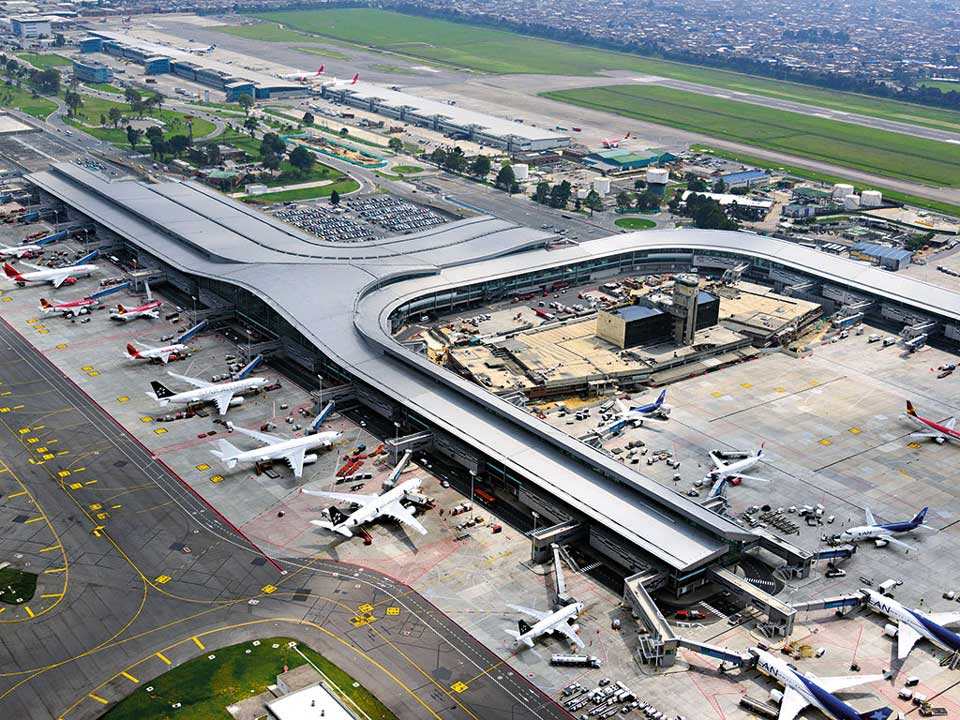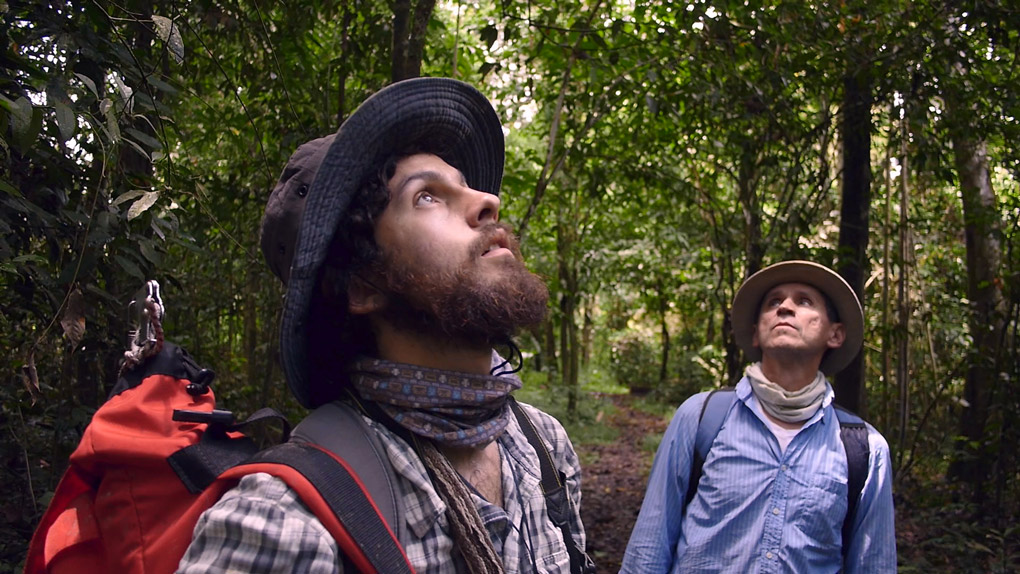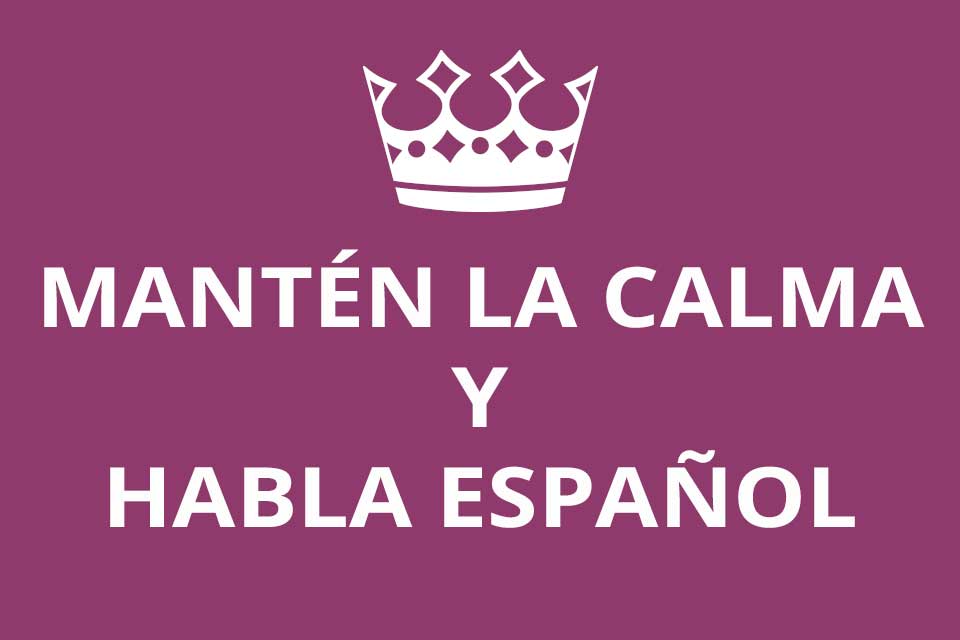
Keep calm and speak Spanish!
It can be a bit daunting to arrive in a country where you don’t speak the lingo, so here are a few Spanish language basics to get you started.
Visiting a foreign country is best enjoyed when we can communicate with the locals. Not only does this allow us to express basic needs and wants, it’s the gateway to understanding a culture and a country. Unfortunately, learning Spanish language for a two week trip isn’t always feasible.
Nevertheless, even if we can’t summon the energy to learn Spanish, a few basic sentences are key in order to get by. While English speakers abound in tourist hot-spots, this may not always be the case and they can be quite hard to come by in other parts of the country.
To start, it’s a must to know the greetings and salutations needed for basic social interaction. To say hello to people you don’t know (approaching a shopkeeper, for example) or informal and semi-formal situations, use one of the following greetings:
Buenas / Buen día / Buenos días / Buenas tardes / Buenas noches
Buenas is a very general greeting that can be used at any time of the day, while día(s), tardes or noches, refer to morning, afternoon or evening, respectively. Informally, a basic hola will serve you right in most situations. The expression “Qué hubo?”, shortened to Q’hubo or quiubo is a common greeting in Colombia, meaning “What’s up?”.
¿Q’hubo John, todo bien? What’s up John? Everything alright?
Todo bien, gracias. ¿Y tú? Everything’s good, thanks. And you?
Depending again on the formality of the situation, you may use one of the following to ask, “How are you?” Note that the variation indicates the plural use, when addressing a group of people:
¿Cómo le / les va? Formal singular / plural
¿Cómo estás / están? Informal singular /plural
¿Cómo has / han estado? How’ve you been? Informal singular / plural
If you’re speaking to someone you’ve met before, they’ll likely want to know “What’s new?” by asking something along these lines:
¿Qué cuentas? / ¿Qué más? / ¿Qué hay de nuevo? / ¿Qué tal?
When meeting a person for the first time, introductions are in order. This involves a handshake for men and a kiss on the cheek when a woman is involved. All you really need to say is, “Nice to meet you” followed by your first name:
Mucho gusto, Mike.
Some of the more common situations you may encounter as a traveller include going to shops and counting money, ordering at a restaurant, finding accommodation, taking a cab or public transport, asking for directions, counting pesos and doing basic banking. It’s also important to know a few basic words for emergency situations.
Numbers and money
Although counting in thousands does take a little while to get used to, the good news is that knowing your numbers from one to one hundred is enough to form the rest. The basic unit is 1,000 (mil), and the rest of the numbers follow from that. Thus 2,000 is dos mil, 20,000 is veinte mil and 100,000 is cien mil. To form compound numbers, simply add an ‘y’ between the tens and the single digits. For example, 84 is a combination of ochenta and cuatro: ochenta y cuatro. A couple of exceptions to the counting rule in the table below include 500 – quinientos and 900 novecientos.
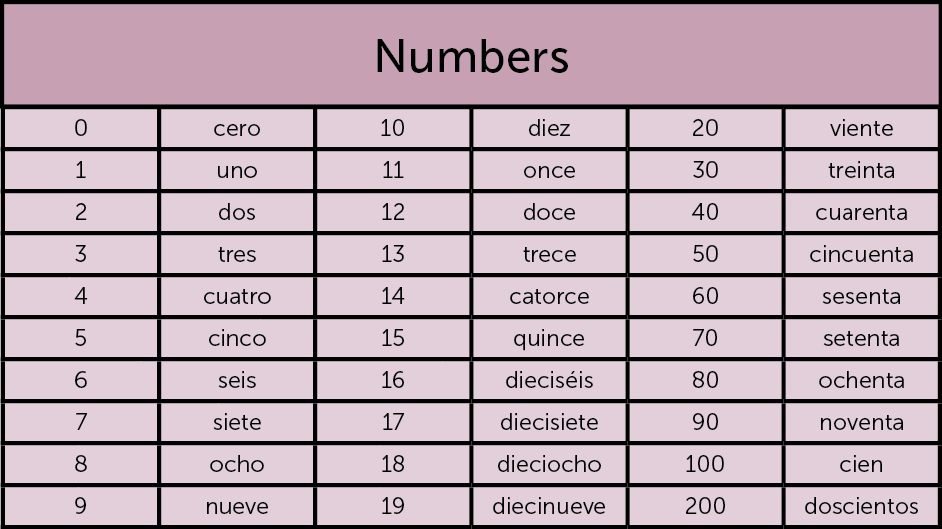
Spanish language numbers.
Shopping and eating
When walking past a shopfront or vendor, it’s common to hear “A la orden”, meaning at your service. The polite response is a quick “gracias.” To ask if a shop carries what you’re looking for, ask ¿Tiene ____? For example, if you’re topping up minutes for your phone, you would say ¿Buenas, tiene minutos?
When asking for prices, use one of the following:
¿Cuánto vale (esto)? / ¿Cuánto cuesta (esto)? How much is (this)?
¿A cuánto está (el vestido)? How much for (the dress)?
If you’re feeling lucky, try to bargain:
¿A cúanto me lo puede dejar? / ¿Cúanto es lo mínimo?
One peculiarity about Colombian Spanish language is the use of the phrase ¿Me regala…? Literally translated to “Can you gift me…”, its use is more akin to “Could I have…?” So, if you’re getting a black coffee – un tinto – at a corner store you would ask, ¿Me regala un tinto? This also applies to objects and services.
When eating out, there are a few ways of asking the server for your dish:
Para mí un ajiaco, por favor. I’ll have an ajiaco, please.
¿Me regala (un corrientazo)? May I have (a set meal)?
To ask what a menu option comes with, you’d ask:
¿Qué trae la hamburguesa? or ¿Con qué viene el combo?
At the end of the meal, once you ask for the bill, the server will ask you whether the tip should be included. There is a 10% optional tip that you may accept, deny, or modify. Be sure to tell the server how you’d like to proceed.
¿Me regala la cuenta por favor? May I have the bill please?
¿Desea incluir el servicio? / ¿Con servicio? Would you like to include the tip?
Sí, claro. Yes, of course.
No, qué pena. No, sorry.
Directions and transportation
Try using one of these phrases when looking for a landmark or an address:
Disculpe, ¿Hacia dónde queda (la plaza)? Excuse me, which way is (the plaza)?
Perdón, ¿Sabe dónde queda esta dirección? Sorry, do you know where this address is?
Estoy buscando (la catedral). I’m looking for (the cathedral).
Keep in mind that in Bogotá, if someone says to “go up”, or subir, they mean that you should figuratively go “up the mountain”, so towards the mountains. Of course, bajar means to go away from the mountain, or west.
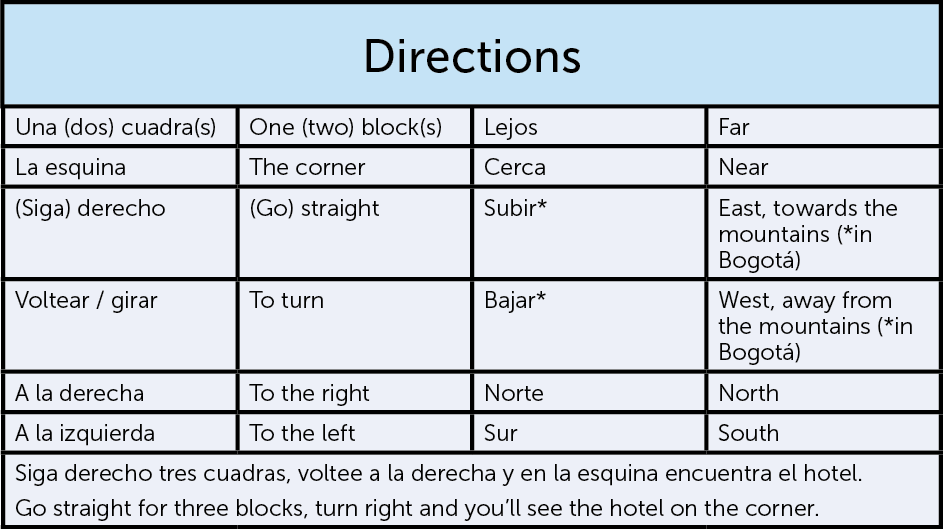
Spanish language directions.
Accommodation
When looking for a place to stay the night, make sure to ask whether basic services are included, as well as food and check out times.
Necesito un cuarto para dos personas. I need a room for two.
¿A qué hora es la salida? What’s the check-out time?
¿El precio incluye el desayuno? Is breakfast included in the price?
¿Tiene aire acondicionado / ventilador? Does it have AC / a fan?
Emergency situations
Hopefully, you will not need to make use of any of this Spanish language, but it’s always best to be prepared.
Necesito una ambulancia / un doctor / ir al hospital. I need an ambulance / a doctor / to go to hospital.
Se me perdió mi pasaporte. Necesito ir a la embajada de (Canadá). I lost my passport, I need to go to the (Canadian) embassy.
Necesito ayuda. I need help.
¿Habla inglés? Do you speak English?




